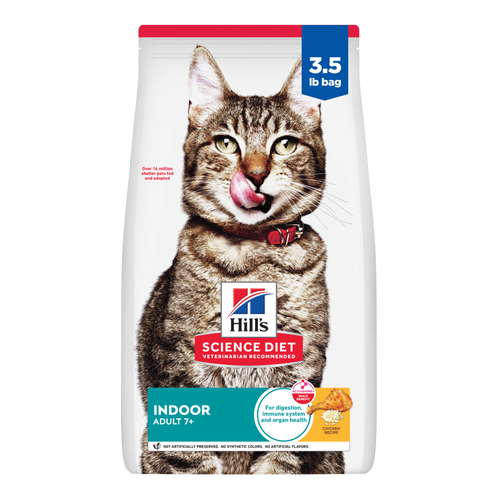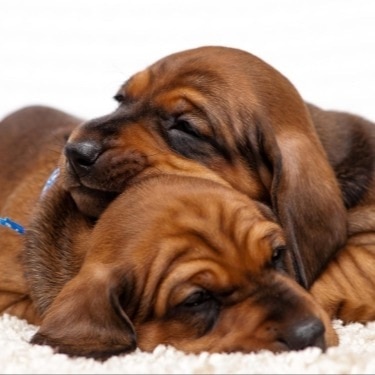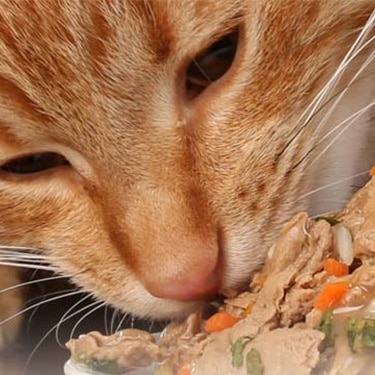
-
Find the right food for your petTake this quiz to see which food may be the best for your furry friend.Find the right food for your petTake this quiz to see which food may be the best for your furry friend.Featured products
 Adult Large Breed Chicken & Barley Recipe Dog Food
Adult Large Breed Chicken & Barley Recipe Dog FoodSupports healthy joints, lean muscle, and beautiful coat for large breed dogs
Shop Now Hill's Science Diet Adult Chicken & Beef Entrée Dog Food
Hill's Science Diet Adult Chicken & Beef Entrée Dog FoodChicken & Beef Entrée in a delicious loaf with complete & balanced nutrition to help keep adult dogs active and healthy
Shop Now Adult Chicken & Barley Recipe Dog Food
Adult Chicken & Barley Recipe Dog FoodSupports lean muscle and beautiful coat for adult dogs
Shop NowFeatured products Adult 7+ Indoor Chicken Recipe Cat Food
Adult 7+ Indoor Chicken Recipe Cat FoodSupports energy level and beautiful fur in mature indoor cats
Shop Now Adult Turkey & Liver Entrée Cat Food
Adult Turkey & Liver Entrée Cat FoodPrecisely balanced nutrition with the delicious taste of minced turkey & liver to help fuel the energy needs of cats during the prime of their life
Shop Now Senior Vitality Adult 7+ Tuna & Vegetables Stew
Senior Vitality Adult 7+ Tuna & Vegetables StewImproves Everyday Ability to Get Up & Go
Shop Now -
Dog
- Dog Tips & Articles
-
Health Category
- Weight
- Food & Environmental Sensitivities
- Urinary
- Digestive
- Joint
- Kidney
-
Life Stage
- Puppy Nutrition
- Adult Nutrition
- Senior Nutrition
Cat- Cat Tips & Articles
-
Health Category
- Weight
- Skin & Food Sensitivities
- Urinary
- Digestive
- Kidney
-
Life Stage
- Kitten Nutrition
- Adult Nutrition
Featured articles What Is Littermate Syndrome? Pet Adoption Guide
What Is Littermate Syndrome? Pet Adoption GuideLearn more about littermate syndrome in dogs and cats and how to successfully navigate adoption and early socialization processes.
Read More The Science Behind Our Love for Pets
The Science Behind Our Love for PetsLearn the scientific reasons why we have such strong connections with our pets, and what science says about the love between humans and our furry friends.
Read More How to Properly Mix Wet & Dry Pet Foods
How to Properly Mix Wet & Dry Pet FoodsAn Orange cat eating from a bowl filled with mixed food
Read More -


Any change to your cat's habits can be concerning. And if you've recently added wet food to your cat's feeding routine, you may have noticed them drinking less water. But is wet food enough water for cats? Asking questions like these shows you're paying attention to your cat's behaviors, which is key to being a responsible pet parent and caring for their health. Here's what you should know if your cat doesn't drink water but eats wet food.


Tasty Tips
Your Hill’s purchase helps support the Hill’s Food, Shelter & Love program, which provides food to hundreds of shelters across North America.
How Much Water Does Your Cat Need?
Like humans, maintaining healthy hydration is essential to many of your cat's bodily functions, such as blood pressure, temperature regulation, digestion, kidney function, and skin and coat health. Your average 10-pound cat needs about 1 cup of water daily to stay hydrated. This includes the water they drink directly from their bowl (or the faucet!) and the water they consume through food. Of course, this is an average, and several factors can affect how much water your cat needs to thrive. The food they eat, their medications and their overall health all influence their hydration status.

For example, if your cat has ever had urinary issues, such as lower urinary tract disease or urinary crystals, your veterinarian likely recommended increasing your cat's water intake as part of their treatment. Maintaining adequate water intake and hydration is also important for healthy digestion, so cats with constipation may benefit from a fluid boost.
Do Cats Drink Less Water When Eating Wet Food?
Cats aren't huge water drinkers, so changes in water intake can be subtle. (And cats typically drink less than dogs of the same size, so comparing their drinking habits is like comparing apples to oranges.) That said, it's normal to notice your cat drinking less than usual after starting them on wet food. Wet food contains more water, so your cat gets more fluids through their meals.
Different types of wet food contain varying amounts of water. Most range between 70% and 80% water. Compare that to dry food, which typically falls between 6% and 10% water, and it's easy to see the difference. Think of it this way: If your cat eats 8 ounces of canned food per day, roughly 6 ounces of that is water. And if you're feeding them stews, soups or gravies, the water content may be even higher.

"It is normal to notice your cat drinking less than usual after starting them on wet food. Wet food contains more water, so your cat gets more fluids through their meals."

Is Wet Food Enough Water for Cats?
By offering your cat 6 ounces of wet food a day, you're increasing your cat's water intake by over 4 ounces — almost half their daily water requirement. When your cat's body absorbs that water, the thirst receptors in their brain signal that all is well and there's no need to drink additional water.
So, if you used to feed your cat exclusively dry food and recently added wet food or switched to wet food entirely, you'll likely notice them drinking less. This isn't anything to worry about. But what if your cat doesn't drink water but eats wet food? How can you tell if they're getting enough through wet food alone?
Signs of Dehydration
Cats who aren't getting enough water will show signs of dehydration, including:
- Decreased skin elasticity (turgor)
- Tacky or sticky gums
- Lethargy
- Sunken-looking eyes
- Little to no urine output
While these are all signs of dehydration, some overlap with other health conditions. If you notice any of these signs, take your cat (and their urine) to your vet for a checkup.
Keeping an Eye on the Litter Box
If you have a single indoor cat, monitoring their litter box can help you evaluate their fluid intake. A decrease in size or number of urine clumps indicates your cat is consuming less water. Most pet parents who switch from dry food to wet food or take a mixed feeding approach may notice an increase in urine since more water coming in means more water going out. Of course, a drastic increase in urine warrants a visit to the vet.

Supporting Your Cat's Health
While feeding your cat wet food can reliably increase their water consumption, keep fresh water out at all times. Most cats who eat wet food still drink water, even if it's not as obvious. If you're ever concerned your cat isn't getting enough fluids or is drinking an excessive amount of water, contact your vet. They can perform urine and other tests to evaluate their hydration status and identify any underlying concerns. At the end of the day, keeping tabs on your cat's water intake is part of helping them live a longer, healthier life.


Dr. Karen Louis owns her low stress veterinary clinic near St. Louis. When she's not helping dogs and cats live their best lives, she maintains her blog, VetChick.com, and is an award winning nature photographer.
Related Articles

Discover how to train your cat, starting with very basic first steps that both reward good behavior and discourage the bad.

Learn how to litter train a kitten with this guide to potty training, including when to start litter training kittens and troubleshooting tips.

When you adopt a cat, you don't just gain a best friend; you also save her life. Here's why getting a cat from a local animal shelter makes so much sense.

Discover which cat toys games your feline friend might like, and how they are great sources of exercise. Explore our library of articles to learn more.

See what Vets have to say
Read reviews from the experts and see why Hill's is the #1 Veterinarian Recommended brand.
See what Vets have to say
Read reviews from the experts and see why Hill's is the #1 Veterinarian Recommended brand.

